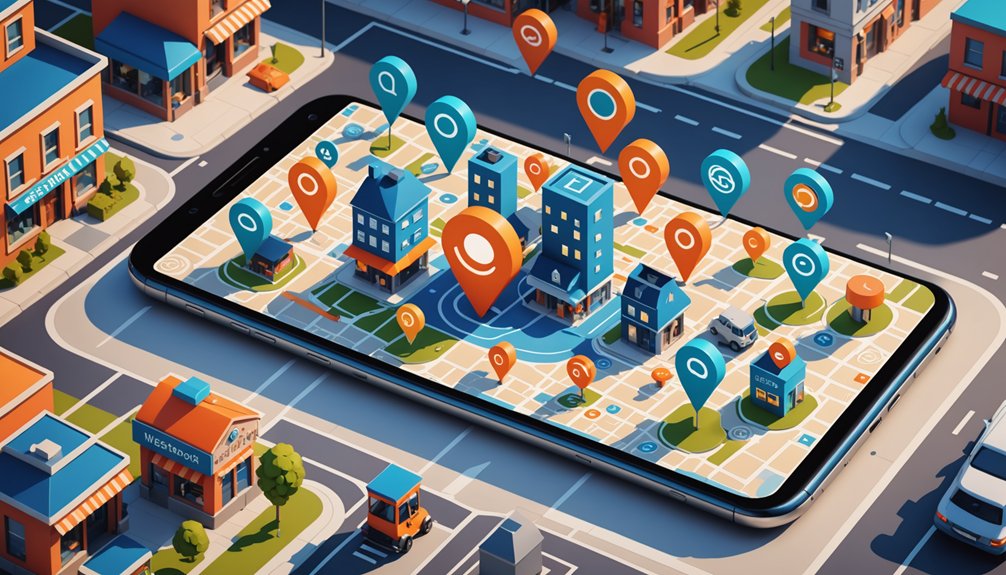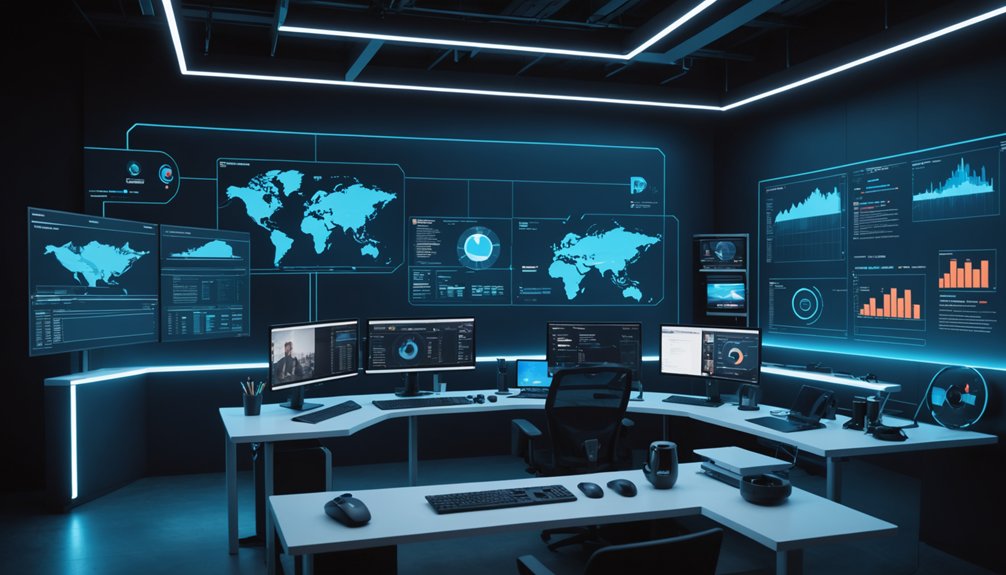Local SEO success in 2025 demands several critical components. First, optimize Google Business Profiles with accurate NAP details and compelling visuals. Mobile optimization isn’t optional anymore—it’s survival. Ditch generic keywords for geo-specific terms like “ethically sourced espresso downtown riverside.” Reviews matter, so respond to all of them, even the nasty ones. Technical elements like schema markup and citation consistency build search credibility. The businesses that nail these fundamentals will leave competitors eating digital dust.

While national brands splash cash on massive marketing campaigns, small businesses face a different reality. They can’t compete with million-dollar ad budgets. But here’s the thing – they don’t have to. Local SEO levels the playing field, and it’s changing fast as we head into 2025.
Google Business Profile optimization isn’t optional anymore. It’s mandatory. Businesses with incorrect NAP details (that’s Name, Address, Phone number) might as well not exist online. Seriously. And those categories? Choose wisely. The difference between “Italian Restaurant” and “Pizza Restaurant” could mean thousands in revenue.
Photos matter. Videos matter more. Consumers expect both in 2025. A business without visual content is practically invisible in local searches. Like wearing camouflage at night. Structured data markup enhances visibility and authority in search results, making your visual content more discoverable.
Mobile usability isn’t new advice, but it’s shocking how many small businesses still have websites that look terrible on phones. People search locally on mobile. Period. If your site loads slowly or looks broken on a smartphone, customers bounce. They’re gone. Optimizing for Core Web Vitals will significantly improve your local search rankings and user experience. In highly competitive markets, page experience signals can be the deciding factor between ranking above or below similar businesses.
Keywords have evolved. Generic terms like “best coffee shop” won’t cut it anymore. Try “ethically sourced espresso downtown riverside” instead. Long-tail keywords with geo-specific modifiers – that’s the ticket.
Reviews make or break local businesses. No reviews? No trust. Negative reviews with no responses? Even worse. Smart businesses in 2025 create systems that automatically request feedback after purchases. They respond to everything – good or bad.
Local content creation separates winners from losers. Sponsoring the little league team isn’t just community service – it’s SEO gold when properly leveraged online. Same goes for local partnerships and events.
Technical aspects matter too. Schema markup tells search engines exactly what your business is about. Google Search Console shows where you’re winning or losing in search. Citations across directories must be consistent.
Track everything. Analyze relentlessly. Adjust accordingly. The days of “set it and forget it” SEO are dead and buried. Local search is dynamic, competitive, and absolutely worth mastering.
With 50% of local searches resulting in store visits within a day, optimizing your local SEO strategy is directly linked to increasing foot traffic and real-world conversions.
Frequently Asked Questions
How Much Does Professional Local SEO Typically Cost?
Professional local SEO typically costs between $200-$400 monthly on retainer.
Hourly rates? Around $50-$150, with local specialists charging $80+.
Project-based work runs $1,000-$3,000 per job.
Overall range stretches from $100 to $3,000 monthly.
Pricing jumps with multiple locations—obviously.
Factors affecting cost include website size, competition level, and service depth.
Some agencies charge premium rates for their expertise.
Competitive markets? Expect to pay more.
That’s business, folks.
How Quickly Can I Expect to See Results From Local SEO?
Local SEO isn’t an overnight miracle. Results typically start appearing within 3-6 months.
Early wins? Some businesses see minor improvements in just weeks—showing up in local searches, maybe a bump in visibility.
But real, meaningful progress takes time. Industry competition matters. So does SEO quality. And those pesky Google algorithms? They’re always changing the game.
Consistency is key. Setup takes 1-3 months, growth happens around 3-6 months, and sustainability kicks in after that.
Patience pays off.
What Local SEO Metrics Matter Most for Measuring Success?
Key local SEO metrics that matter most? Local search rankings for target keywords—obviously.
Conversion rates tell you if traffic turns into actual business. Google Business Profile metrics track views, clicks, and calls.
Review count and rating? Yeah, those matter too. Bounce rates and time on site indicate content quality.
NAP consistency across platforms is essential for credibility. Traffic sources help understand where customers find you.
Mobile metrics can’t be ignored—most local searches happen on phones these days.
Should I Hire an SEO Agency or Manage It In-House?
The decision between hiring an SEO agency or managing in-house depends on several factors.
In-house teams offer cost control and quicker implementation but might lack expertise. Agencies bring specialized knowledge and tools but at ongoing costs.
Small businesses with limited resources might start in-house, while those needing immediate results could benefit from agency expertise.
Bottom line? It’s about balancing budget constraints against technical knowledge requirements. Some businesses even opt for a hybrid approach.
No one-size-fits-all solution here.
Can Local SEO Work for Service-Based Businesses Without Physical Locations?
Absolutely, service-based businesses without physical locations can crush local SEO. The game’s just played differently.
They configure service areas in Google Business Profile, target location-specific keywords, and build local citations. No storefront? No problem.
These businesses focus on reviews, mobile optimization, and hyperlocal content instead. Many plumbers, landscapers, and electricians dominate local searches this way.
It’s all about digital presence, service area configurations, and strategic content. Physical address? Totally optional these days.




